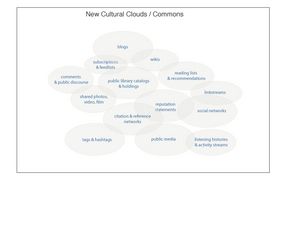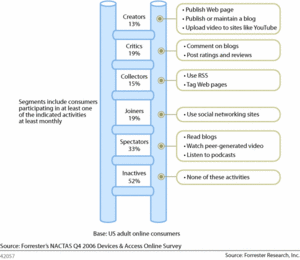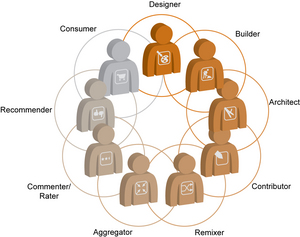Value Dissonance, Digital Goods, The Long Tail & My Oven
This weekend I went looking online for the service manual for my oven, to effect some DIY style repair work, and was unpleasantly surprised to find every collection of digital service manuals within ready googling distance locked tightly away behind a solid e-commerce wall.
Ten, five, or even three years ago, some thoughtful mechanical engineer would have lovingly uploaded a blurry pdf conversion of a scan of a photocopy of the original KorEnglish instruction manual to a public file share hosted somewhere deep in the wilds of homebrew electronics land. And there it would be, waiting for people who needed it.
Not anymore, apparently. Thanks to all the MBAs who read The Long Tail during the revenue models section of their Digital Business courses, and then went prospecting for an under-monetized content domain with predictable transaction and renewal flow volumes (read, opportunity), I now have to pay $20 to find out how to take apart my ailing appliance. To soften the monetary blow, I have an instantly findable, one-click-to-purchase, secure-payment-capable experience. But it’s still $20, when it would have been free last time I looked.
Take note, this is a sea change in digital culture staring us in the face: DIY become $DIY, thanks to ‘rationalization’ of the home brew electronics information economy.
If it sounds like I’m bemoaning the simple fact that businesses like to colonize new markets, and I now have to pay for something I used to get for free, I want to say ‘Not true.’ (Okay, partially true.) Something was wrong with this experience. At first I thought it was price: That manual is fully digital, meaning it comes with absurdly low publication costs for printing, distribution, inventory and restocking, thanks to the-great-copying-machine-in-the-sky-called-the-Internet. It’s also transparently findable via a simple two-word query, which I know because I went looking for it myself, so there’s few of the typical costs from AIDA (generating awareness and motivating my decision to buy). Yet the instruction and service manual for a piece of hand-me-down kitchen equipment now carries the hefty price tag of $19.95. And that’s without a preview; this is digital merchandise I’m expected to buy on blind faith. So much for free.
Then I realized something deeper was involved. This experience is interesting because it demonstrates the inevitable tension that comes from living in an era during which basic cultural layers, with very different ways of assigning value, come into friction with one another. At heart, this is a modern experience of value dissonance driven by two ancient human patterns in collision.
The first pattern: I am ‘given’ the oven for ‘free’ by virtue of my ‘membership’ – earned by marriage – in the local operating unit of the folk-recycling economy instantiated by my extended family; specifically, my Dutch in-laws. Apartments in Europe don’t come with appliances, so after moving to Holland from New York, I need a new oven thanks to the legacy incompatibility in electric distribution infrastructures (voltage differences) between Norte America and Europa. This lovely unit was available from the family’s pool of collectively managed assets, thanks to a construction accident in my wife’s cousin’s neighbor’s adjoining property, which caused a flood of water into their home while they were on a 3-week holiday, resulting in substantial water damage, compensated in proper Dutch fashion by a hefty insurance settlement, which allowed this particular pair of agents in the extended family network to go shopping for a new kitchen set-up, all appliances included, long before the projected lifecycle expiration of their current oven. [ill winds indeed…])
This pattern is as old as managing the aggregate livestock and pasturage. Deciding which of the children to educate, send to the military / priesthood (or some other form of bachelorhood), or sequester in a convent b/c of lack of required marriage dowries is the same thing. For me, all is fine and good: I have the oven I need, and all I have to do in return is allow the extended family to use my house to host the annual family New Year’s dinner. A fair trade for all parties.
The second pattern: the constant evolution in the definition of first-tier tradable goods: Successive waves of technosocial change have made the instruction manual for my oven a digitally tradeable good on it’s own. At brith, the manual was “part of” the consumer product package of the oven, only available – and meaningful – when sold with the appliance. Fast forward to the pre-Long Tail Internet, and the manual was free to me, as a resident of the unfenced realm of the digital frontier, exchanged via the folk economy of DIY practitioners. But now that the technical infrastructure required to effectively enclose this resource is itself nearly free, and every MBA knows the Long Tail (sounds like one of those terrible fake American Indian names people used be given in TV sitcoms, when some form of hijinks led them to visit a ‘Native American Tribe,’ and the characters had to be identified within the tribe’s conceptual space [another example of truly awful sort of cultural friction…]), this particular piece of digital content has a price tag. A hefty one.
So using the free appliance now requires content from the ambient information cloud in the form of a paid asset that is now, on it’s own, a tradable good. This misalignment causes friction and dissonance for me; I have an appliance from the folk-resources layer, but all the useful information *about* the appliance resides in the newly monetized Long Tail digital content economy. The newly digital manual that should come with my hand me down oven is very much trying its hardest to be a traditional product from the universe of tradable goods: a Thing, with a Price, sold by a Business, to Customers.
What drives the friction, and what makes this worth paying attention to and writing about, is that it is the opposing direction of the movements of these different kinds of goods, digital and material, that creates dissonance by bringing me a free physical oven and an expensive digital service manual.
The oven used to be part of the first-tier tradable goods layer. It was a packaged consumer appliance product, created by a manufacturer, sold via optimized distribution networks that moved it through the chain from manufacturer to wholesaler to retailer at a fixed price, communicated via marketing channels embedded within discovery and communications media. Since then, it’s ‘fallen out of’ the tradable goods economy, and is treated as a family asset, to be handed around as best suits the collective needs, without any official transactions taking place. We could put it back into the tradable goods economy as used, if we choose to sell it, or even enter it into the recycling economy, where it would be broken down into constituent elements – e.g. motors, wiring, display, or at a lower level of integration physical materials like glass and steel – to whatever extent possible. But almost all of the changes in value for material goods when they shift from one cultural / economic layer to another are one-way, and downwards. The possible paths for re-uptake of material goods that have fallen into the folk economy layer used to be transformation into antiques, art, or collectibles – all one form or another of the museum economy.
That’s not the case with digital goods in general, like the newly Long Tailed service manual for my oven. The manual was originally part of the consumer / product economy for tradable goods when bundled with the oven. Since then, it has undergone several transformations. First, it was un-bundled and digitized for the DIY layer (making it part of the folk economy), Now it is once again part of the product economy, though now in it’s un-bundled and digitized form. In terms of which economy it’s part of, *the manual is moving all around the page on it’s own*. That’s highly unnatural!
This is a key property of digital goods that the material world is just beginning to understand. Digital goods are designed for just this sort of mobility: We can move digital goods all around the map in terms of the cultural / economic layers they inhabit, and their consequent value, with a few changes in addressing and format. No transformation of a digital good is necessarily one-way. And when these transformations aren’t synchronized with the elements that inhabit the physical world, we feel the conflict and tension that results.
In my case, the oven is moving one way, while the information about it is moving the other way. This failure to dance together economically and culturally is a consequence of the way that the oven was designed, made, marketed, distributed, etc. It’s a temporally isolated form of dissonance that emerges from friction with the new digital layer that’s permeating the world so rapidly. If you’re familiar with spimes, and related concepts like service avatars and information shadows, you know this is a (ostensibly) temporary state of affairs. Once our cultural frames of reference catch up with our technical capabilities, and everything is part of the great database in the sky, these experiences of friction should be much less common.
But in the meantime, I have to fix my oven on my own. Or cough up the $20 for the manual…






